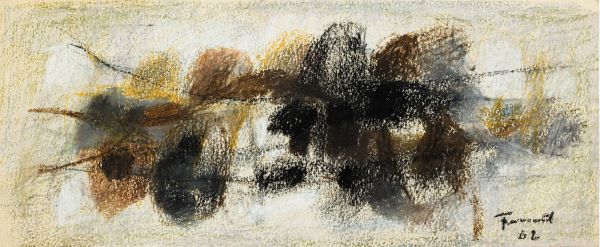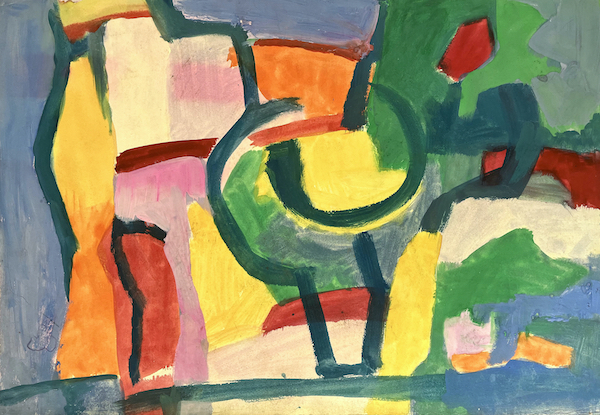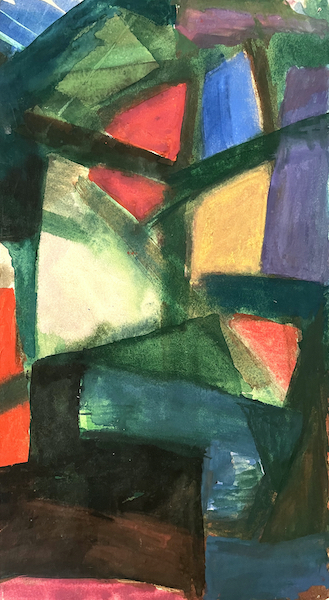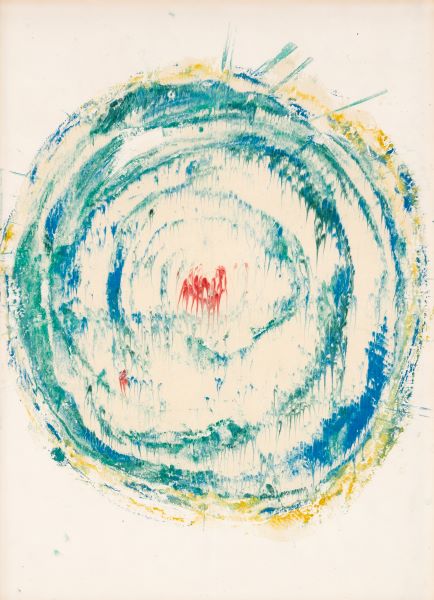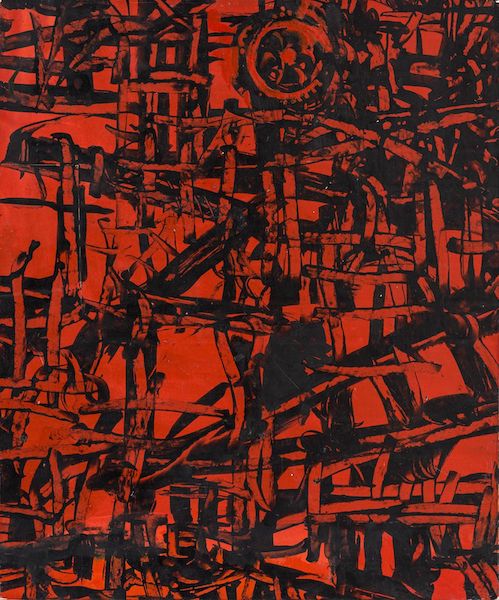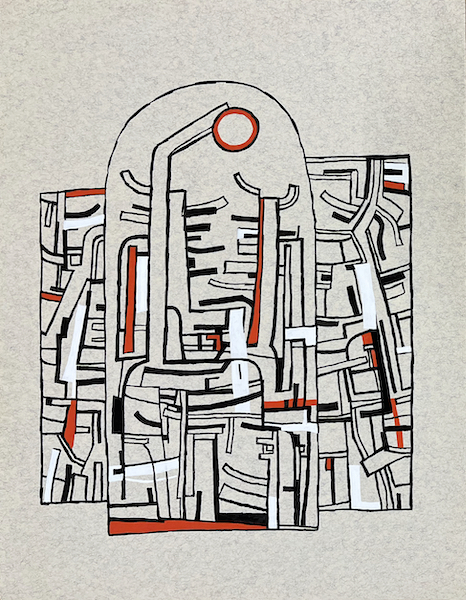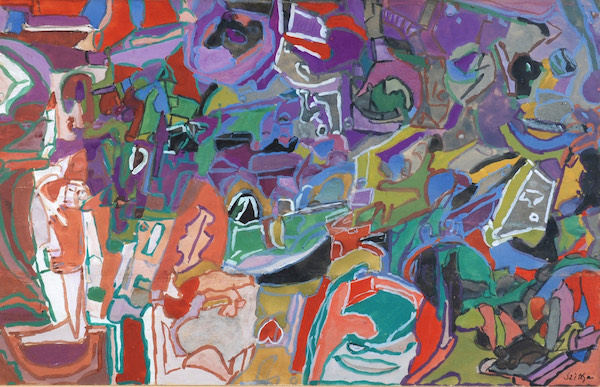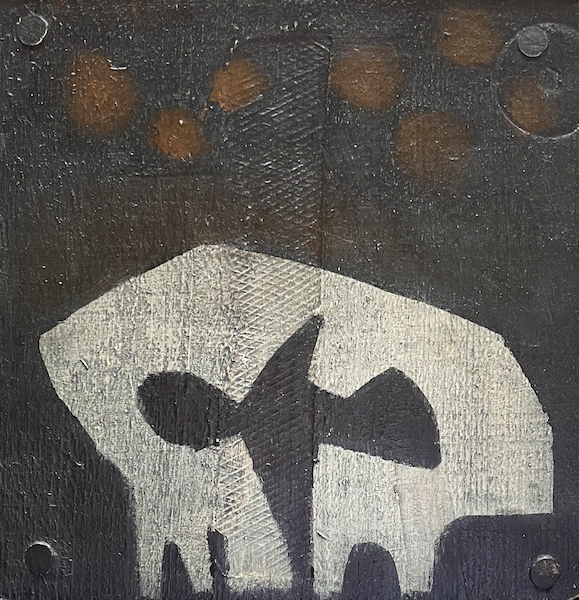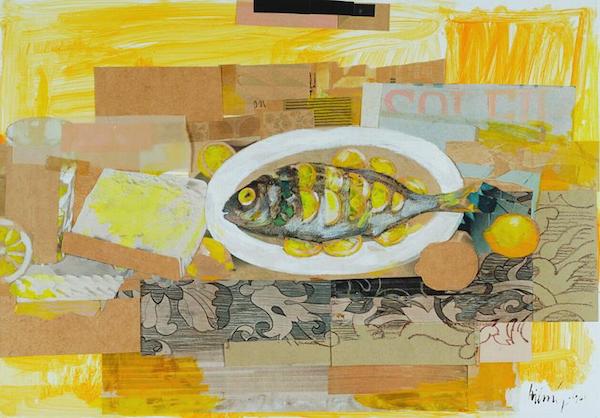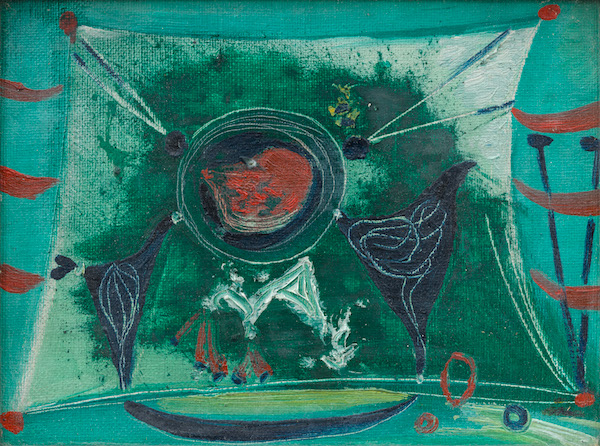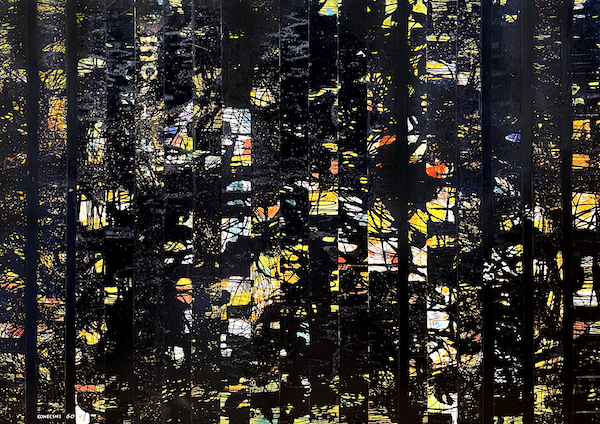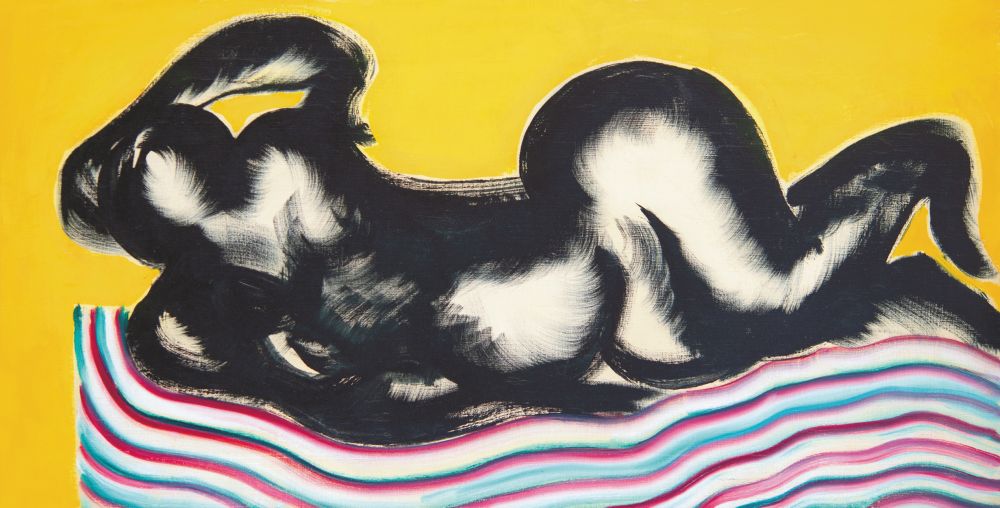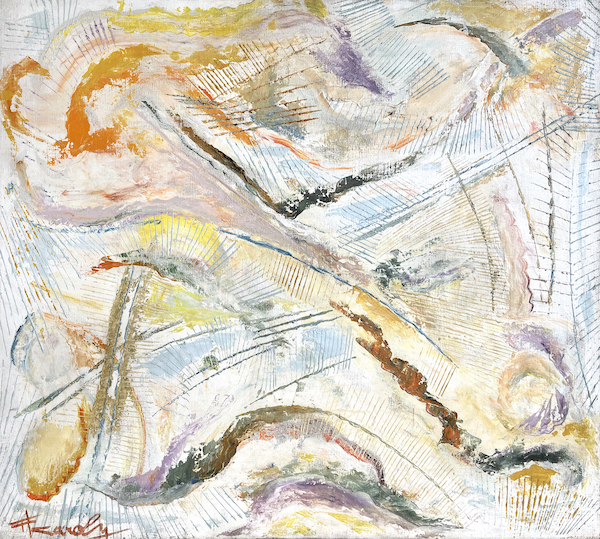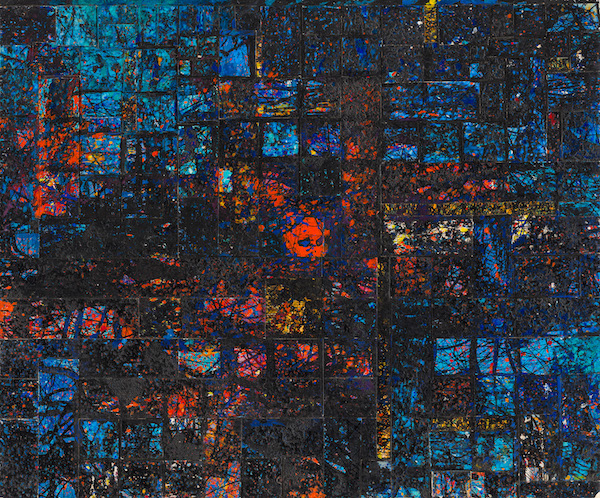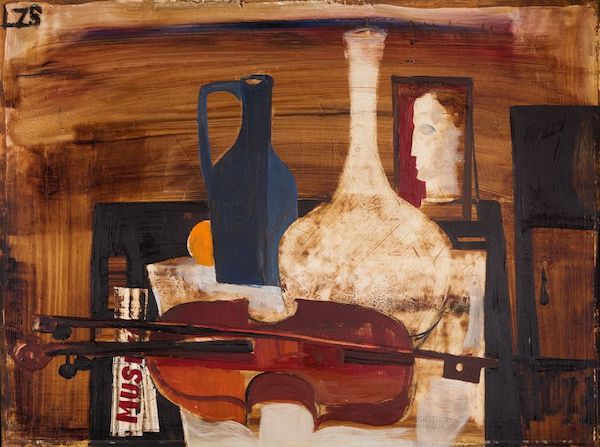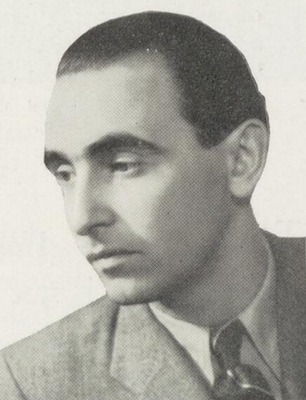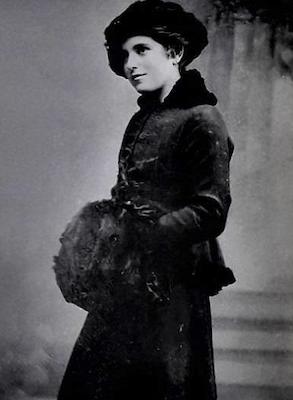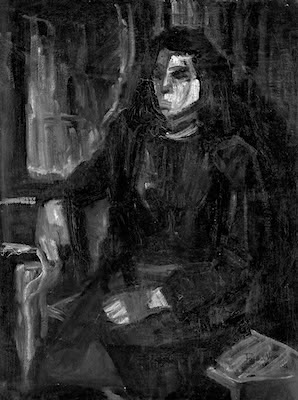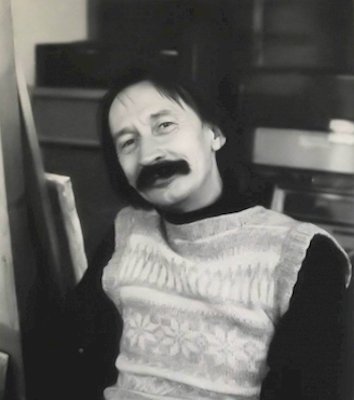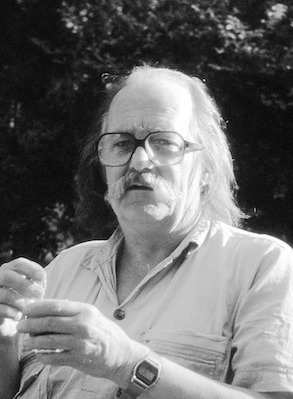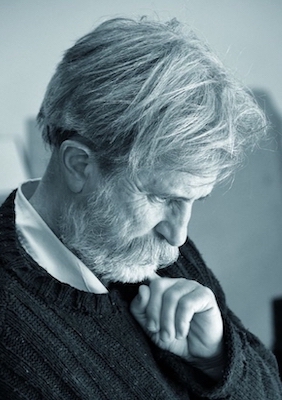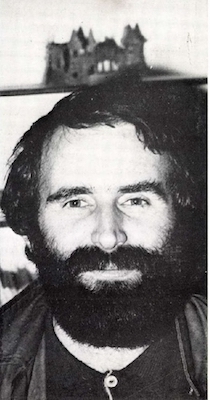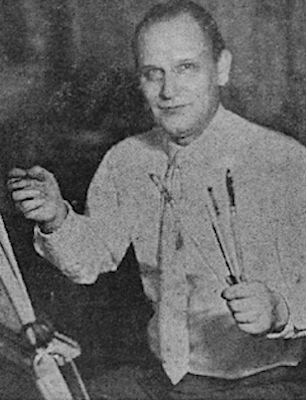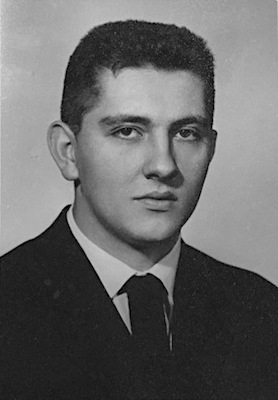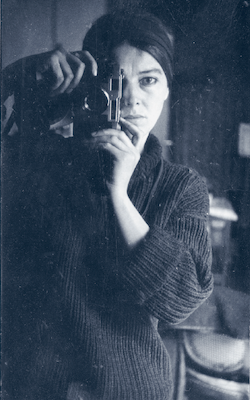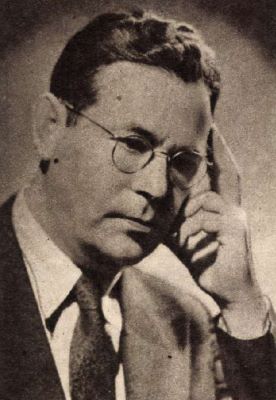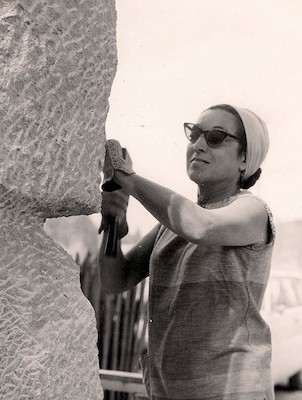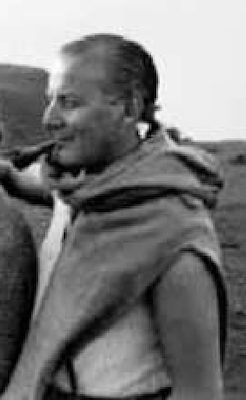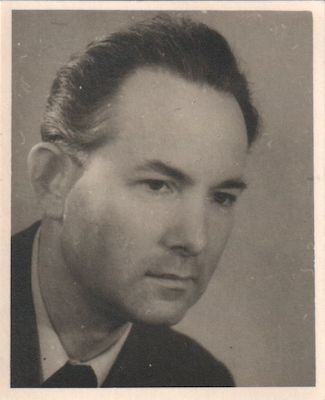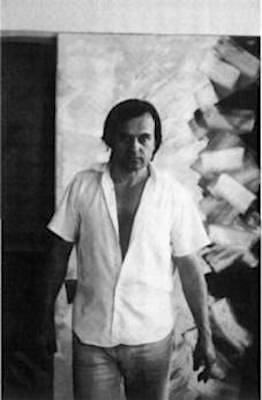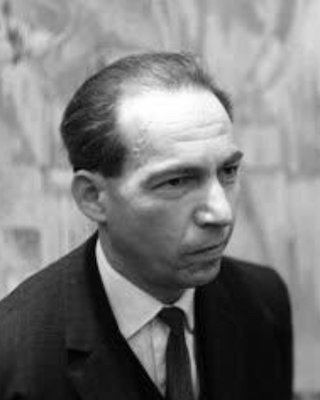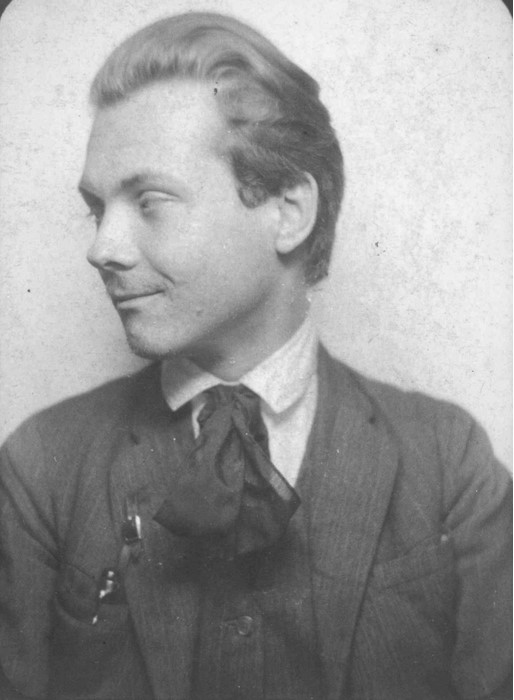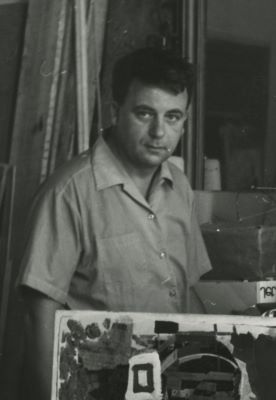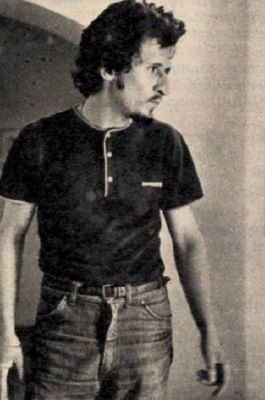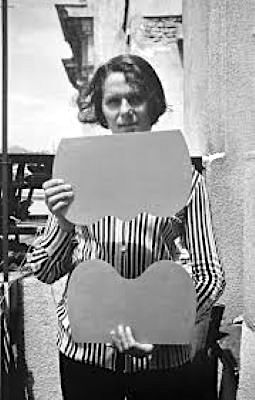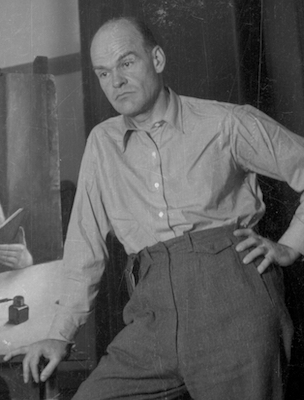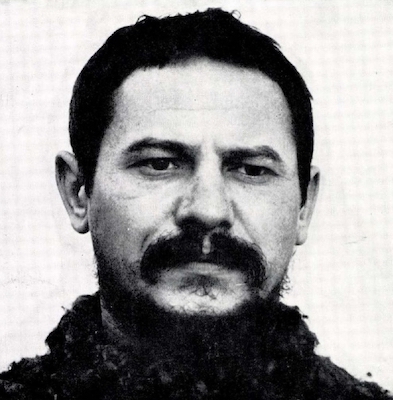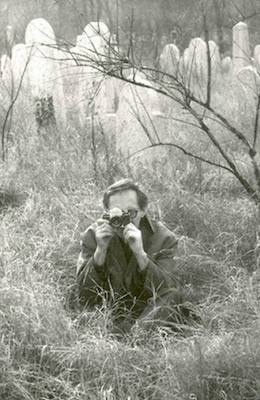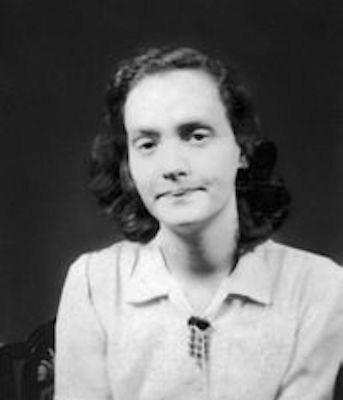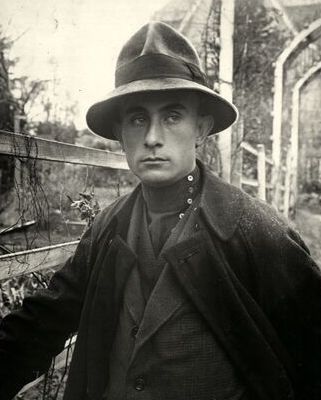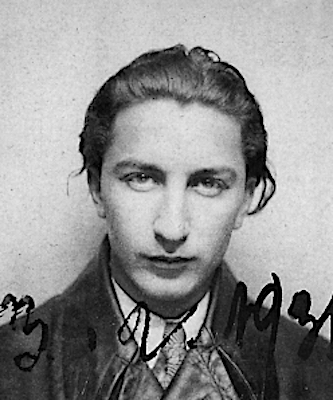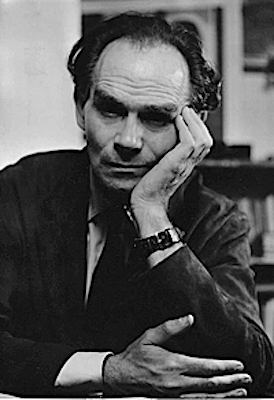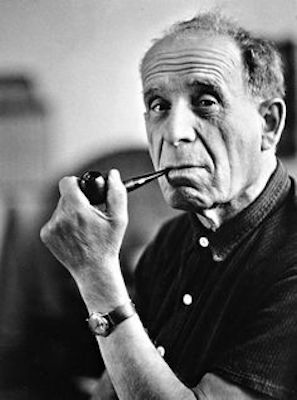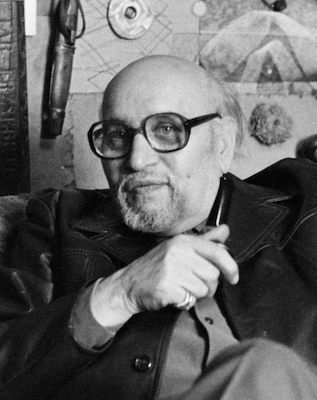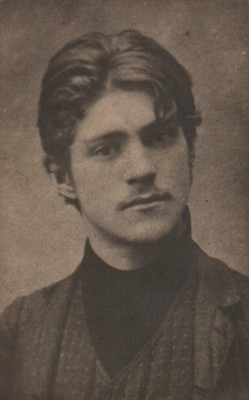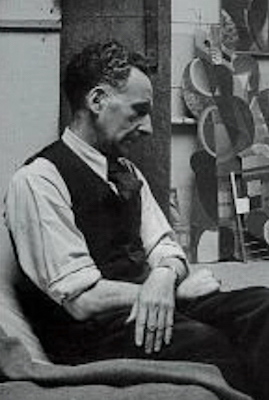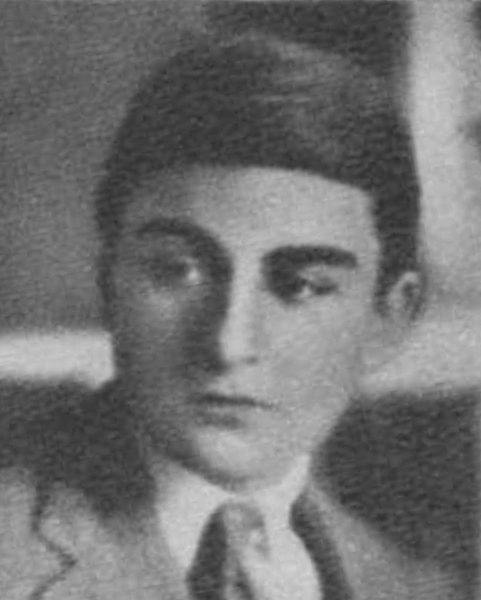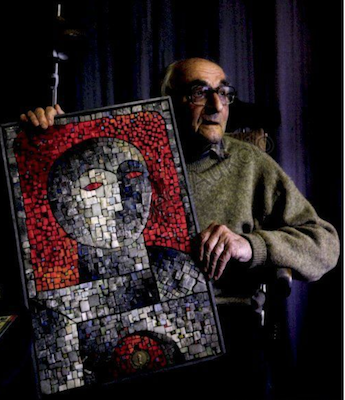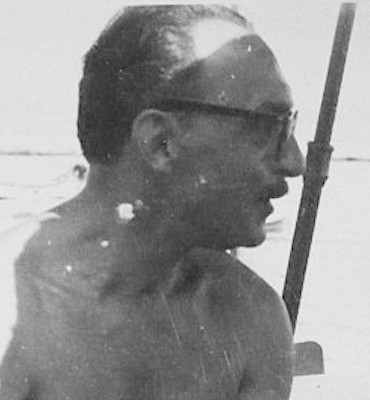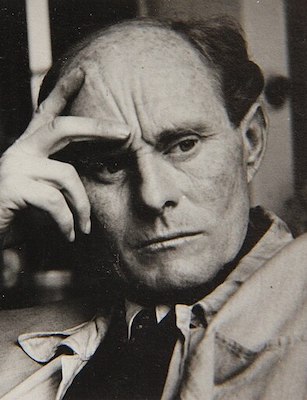Post-War Abstraction
(1948 - 1980)
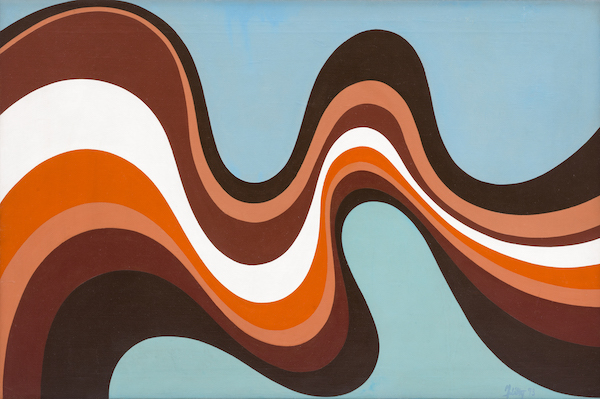
About
History:
The presence of the avant-garde - and abstract art within it - in Hungary was met with conservative aversion from the beginning, and it was a frequent target of art debates, caricatures, or satirical writings. After the fall of the Hungarian Soviet Republic (in 1919), most of the representatives of the avant-garde left the country. The strange situation arose that the further fate of the first wave of Hungarian avant-garde art can be traced mainly through the work of the artists of the groups who emigrated (to Vienna, Berlin, Paris, or Moscow) until the amnesty of 1926. The battle between (the so-called) ’isms’ and mimetic art (naturalistic, realistic depictions) resulted in the spectacular victory of the latter in the twenties in Hungary. Thus, the defining trends of the next two decades were neoclassicism and post-impressionism (post-Nagybánya style) represented by the Gresham circle. The cultural policy of the time recruited its official artists from among the former and organized the Roman scholarship system around them. The official art of the Horthy era was later referred to as the pejorative neobaroque or neofolk style (which was a mix of historicism, academism, and eclecticism). The cultural policy showed a hostile attitude towards all manifestations that were in the spirit of internationalism and social ideals. Thus, only scattered, and short-lived attempts were left, which were partly carried out by avant-garde artists returning home from emigration, partly by a few theoreticians and artists who remained in Hungary and tried to follow the example of Russian-Soviet art: Image Architecture (Kassák), design style of Bauhaus (Bortnyik), mass art (Kassák, Hevesy, Palasovszky). In the 1930s, the program of the Szentendre movement (named after Lajos Vajda and Dezső Korniss) wanted to combine early Hungarian constructivism and the Russian avant-garde with folk art, which was inspired by the ethnomusicology (Béla Bartók, Zoltán Kodály). This was the second generation of the Hungarian avant-garde, however, as can be seen before and later, political persecution (and then the World War) interrupted the unfolding and development of these trends.
A brief description and characteristics of post war Hungarian abstraction
For a short time after the Second World War, it seemed that progressive Hungarian art was finally taking off. The European School was founded in October 1945 with the aim of achieving synchronicity with Western arts, and to form a bridge between international and Hungarian cultural life. The group was full of hope for a new beginning. European School was characterized by plurality of styles, an existence above all styles; they wanted to represent Expressionism, Fauvism, Surrealism and Abstract Art at the same time. The art group in its name and spirit connected with the ’Ecole de Paris’; from the traditions of the capital of fine arts they inherited a universal approach, the tolerant respect for different values existing side by side, an anti-schismatic attitude. The best of modern Hungarian artists joined to the European School (Anna Margit, Jenő Barcsay, Endre Bálint, Béla Bán, Lajos Barta, Dezső Bokros Birman, József Egry, Erzsébet Forgács-Hann, Jenő Gadányi, Dezső Korniss, Tamás Lossonczy, Ferenc Martyn, Márffy Ödön, Ernő Schubert, Piroska Szántó, Júlia Vajda, Tibor Vilt). They organized exhibitions, held lectures, and published theoretical pamphlets to popularize the latest art trends; the exhibitions of Paul Klee and the Czech Surrealists were realised upon their initiative. Barely a year after the European School was founded, the representatives of non-figurative art left the group due to disagreements. They created the Group of Abstract Artists (Gyarmathy, Lossonczy, Béla Fekete Nagy, József Jakovits, Sameer Makarius, Gyula Marosán, Ferenc Martyn, Gellért Orosz, Magda Zemplényi) and organized their own platforms, exhibitions etc. Ernő Kállai was the theoretician of the group who arranged the exhibition New World Concept, held at the Gallery to the World's Four Quarters in February 1947, and simultaneously published an illustrated booklet The Hidden Face of Nature. This was the culmination of Kállai’s work on Bioromanticism (which derives from his realization of the similarity between biomorphic art and scientific photography). The exhibition was set up to highlight the relationship between phenomena occurring naturally, and the new non-figurative painting. Thus, alongside x-ray and microscopic photographs were photographs of art and architecture as well as original works by Max Bill, Willy Baumeister, and members of the Group of Abstract Artists. In addition to individual exhibitions organized for abstract painters and sculptors, several members of the Group of Abstract Artists also participated in the Salon des Réalités Nouvelles in Paris in 1947, but after that they did not have the opportunity to present their work in the home country or abroad. The press mostly considered the activities of the European School and the Group of Abstract Artists to be pessimistic and destructive. Their exhibitions served as a pretext for the great abstract-realist debate (1946-1948), in which all important thinkers of the era took part (e.g., Bernáth Aurél, Ernő Kállai, Lajos Kassák, Béla Hamvas, György Lukács, Lajos Szabó). The modernists had to face more and more attacks, in parallel with the communist political turn, all this led to the suppression of the two groups, and the cultural policy classified abstract trends among the prohibited directions in 1948. Those who did not want to change their artistic vision and paint socialist realist pictures chose internal emigration and continued to create their abstract and surrealist works almost secretly.
After the Revolution of 1956 - and after seven years of total seclusion - the hope of rehabilitating the avant-garde arts shone again. The exhibition of ‘Constructive Endeavours’ or the ‘Spring Exhibition’ (where abstract artists could also exhibit) was held in the spirit of opening in the following year. But simultaneously with the retorts against the revolution, abstract art became cursed again, and labelled as anti-human, capitalist offshoot, anti-reality, incomprehensible, completely opposed to socialist realism. At the same time, modernity as a symbol of socialist progress was an important element of the consolidation of the Kádár regime. So even though the official assessment of abstract art was always negative in the sixties, the guidelines of art policy were gradually transformed in its direction. From the beginning of the sixties, in the spirit of the cultural policy that ensured relatively greater freedom, artists could spend longer or shorter periods of time in Western Europe, where they could get to know the latest contemporary trends, so these currents arrived in Hungary through several channels. On the other hand, it is important to note that not only one or two generations appeared on the scene in this decade, but also three at the same time: the members of the European School, which had been side-lined for more than a decade, and some of its artists found their way to young artists (Korniss Dezső, Gyarmathy Tihamér, Tamás Lossonczy); the middle generation starting in the mid-fifties, who perhaps suffered the most from the cultural isolation of the previous period (e.g. Oszkár Papp). Finally, the youngest generation, in which the need to further develop specifically Hungarian traditions and catch up with current, international contemporary art arose again. They sought the traditions that had previously been violently interrupted, an example analogous to their own existential problems. One of these was the Kassák avant-garde, the other was the constructive-surrealist direction of Szentendre art. Keserü Ilona and Ferenc Lantos considered themselves a student of Ferenc Martyn, but Keserü also draws impulses from Kassák and Korniss. Kassák had at least one consistent follower, János Fajó, while Korniss was the master of many young artist because he was capable of renew his art in the most radical way. This generational congestion resulted in encounters with each other instead of positional battles. The principle of the hegemony of one style was refuted, and new ways of expression were born, which prepared the ground for the new artistic trends that appeared around 1966-1967. At the beginning of the sixties, abstract works could only be seen in studios and private apartments in Hungary, and from the second half of the decade, at the self-funded exhibitions in Fényes Adolf Terem, as well as at the presentation of some scandal-ridden chamber premises (Stúdió, IPARTERV, Szürenon, Balatonboglár). So the abstract artists from the are were placed outside or on the periphery of official culture.
1980 marks another milestone in the history of modern Hungarian art: on the one hand, this is the period of legitimization and institutionalization of the Hungarian avant-garde, on the other hand, a radical turn occurred in the oeuvre of many artists. Sensing the wind of post-modernism, the puritanical and reductive works are replaced by eclectic ones that freely use various traditions and styles and promote the cult of individuality. This new phenomenon was called ‘New Sensibility’.
Styles, art groups, workshops
From the turn of the fifties and sixties, one characteristic of post-war Hungarian avant-garde art and abstraction is that there were no sharp boundaries between the various trends. Many times, the same artists represented different trends in their different periods. In other words, there is interaction and parallelism not only between different generations, but also between styles, which can presumably be explained by the time delay and the desire to catch up with contemporary art as quickly as possible.
Abstract expressionism, Calligraphy, Informal, or Lyrical Abstraction brought a radical change in attitude and style in Hungarian art after 1956, as they broke with all kinds of naturalistic, realist-naturalist, and post-impressionist artistic practices. The works of Dezső Korniss made between 1942-1944 (e.g., Farewell) and his post-war so-called ‘drip paintings’ (Kentaur, Unicornis), can be considered as antecedents. In his calligraphies painted between 1958-1963, Korniss gradually moves from complete automatism to a more meditative creative process, through which the elementary gestures begin to be barely perceptibly organized into living structures and orders. He often used a sand base, on which he dripped enamel paint, creating dense and increasingly complex image surfaces. The source of Korniss’ calligraphies, in addition to Far Eastern painting, was the folk-art pottery whose surface was covered with colored glaze using the flow or drip method. Among the members of the youngest generation, the visual and formal elements of (American) gesture painting can be found especially in the early paintings of Tamás Hencze, Endre Tót, István Nádler or Krisztián Frey. Over time, Tót and Frey's artworks were enriched with pop art features (e.g., numbers, letters, symbolic motifs), while Hencze banished personality from his near-monochrome gestural paintings in the second half of the 1960s by developing his specific technical process (he applied the paint to the substrate using a spray gun and a rubber roller).
Another main trend of abstract expressionism is lyrical abstraction and informal. Formed because of the organizational work of Sándor Molnár, a loose group of friends, later known as the Zugló Circle, worked since the end of the fifties to synchronize Hungarian and international abstract art, which had been completely silenced in Hungary, if for no other reason, then for themselves. They strove for continuity and tried to unite the broken traditions when, on the one hand, they contacted members of the older generation of the Hungarian avant-garde (Lajos Kassák, Dezső Korniss, Tihamér Gyarmathy, Tamás Lossonczy, Ferenc Martyn). On the other hand, when they were introduced to international trends through the writings of Kandinsky, Malevich, Klee, and Jean Bazaine. At first, they sympathized mainly with French lyrical abstraction which was both a model and an asylum, an option for young Hungarian painters to drill themselves in the creation of sovereign form. In the paintings of Imre Bak, Endre Hortobágyi, Sándor Molnár, László Molnár and István Nádler, the aim was to create an organic unity of pictorial organisms elaborated in every detail. By the second half of the 1960s, different artistic attitudes were becoming increasingly apparent. While Sándor Molnár's emotional content remained dominant, and his ‘colour field’ paintings, built from the tones of a single colour, made him a pioneer of Hungarian monochrome painting. Until then, Hortobágyi's calligraphically swirling surfaces, László Molnár’s decorative compositions, all appear to be reiterating the pictorial structures of Bazaine, Manessier. Nádler's lyrical abstract artworks had a stronger approach to recording the momentary psychic state, while Bak was interested in rather structural problems. They were deprived of the possibility of public criticism. When they had their first show in the club of the Academy of Art, the exhibition was banned. So, for a long time, the existence and weight of Hungarian abstract expressionism was unknown even to specialists since its representatives’ artworks were only visible in their studios or at least semi-public apartment exhibitions. In addition, some of them quietly incorporated other style features, while others underwent a style change.
In Hungary, the so-called geometric abstraction (or new abstraction) appeared in the second half of the sixties. It considered the classical (Malevich, Mondrian, or Kassák) constructivist directions of the 1910s as its ancestor, as well as exemplary in a spiritual and ethical sense, but also as a path that could not be continued or imitated. Stylistically, it was more influenced by the American hard edge, minimal art and signal painting that appeared in the late fifties. Imre Bak and István Nádler encountered these trends for the first time when they went on a longer study trip to Western Europe in the mid-1960s. As a result, their art was significantly transformed. The free brushwork conveying emotive contents disappears and the picture surface is filled with the strict system of homogeneous colour fields that are painted with impersonal preciseness. Nádler's peculiar hard-edge art the geometrical forms are not totally devoid of objects: they refer to the motifs of the Avar art of Hungary, or to the abstract ornaments of the Hungarian folk art. At this time Nádler intended to concretize the geometrical structures by means of using motifs of the regional culture. This made it possible to synthesize international methods and Hungarian traditions, as well as to develop a system of signs that could become a collective visual language. Because Hungarian geometric abstraction, in addition to not sharply separating from other trends (e.g., abstract expressionism, pop art), was characterized by a kind of sentimentality - all along, it strove to make the artworks suitable for functional purposes as well. Bak was the first to have used the method of ’shaped canvas’, which results in the total identity of the painted form with the surface as well as the turning of the surface into an object of art. At the turn of the 1960s and 1970s, hard edge became a symbol of artistic modernity and progressiveness in Hungary.
The paintings of Pál Deim, Ilona Keserü or István Nádler from the late 1960s can also be regarded as a specific domestic interpretation of signal art. Deim is built his art on the combination of the simplified, idol-like human figure and the motifs of Szentendre (Vajda), while Keserü refers to Hungarian traditions with gravestone and bird shapes redefined in fiery colors. in motifs. From 1968 to his death Korniss also returned to strict formulation. He rediscovers the decorative motifs of the Hungarian folk art and brings them closer to complete abstraction. He takes geometrical elements out of the ornamentation, magnifies them, and practically interprets them as abstract forms. During the last ten years of his life the characteristic cross-motif of his early artistic career appears again by way of feedback to the great Constructivist inheritance. At this time, he tries to achieve synthesis: the motifs of the popular art purified of all incidental elements and raised to the level of universal validity as well as the cross of general meaning represent the fusion of avant-garde, history, Utopia, and tradition. Hungarian "signal art" does not draw from the characteristic material-visual environment of technical civilization, but from the visual culture of folk art or the pictorial system of ancient peoples.
Iparterv/Szürenon/Balatonboglár
Finally, it is important to mention the workshops which opens towards design and applied arts. The Pécs Workshop was composed of Tamás Aknai, Ferenc Ficzek, Károly Halász, Károly Kismányoki, Sándor Pinczehely, Lajos Szelényi and Kálmán Szíjártó, all members of the Studio of Applied Arts of Pécs, led by Ferenc Lantos. The group considered the activities of the Bauhaus movement as exemplary, especially in its technical approach. Apart from the Hungarian artists who were members of the Bauhaus school (Farkas Molnár and Alfréd Forbáth), Pécs is also influenced by the art of Jenő Gábor, Ferenc Martyn and Lajos Kassák. The Pécs Workshop was aware of the development of the newest artistic movements in Europe and in Hungary, but always remained close to the traditions of Pécs. Besides printmaking, painting, and photography, the group also used applied art techniques. At the beginning of the 1970s, the artists worked intensively with the enamel factory of Bonyhád, taking part in the Enamel art symposium created there in 1968, and were also active in the field of graphic design. The group wanted to the renewal of constructive and avant-garde traditions of Hungarian art, and following the directions of Ferenc Lantos, worked on providing a base for a new visual language, a new visual culture. The members of another creative group, the Budapest Workshop, were former members of the Zuglói kör (János Fajó, Imre Bak, István Nádler). Their programme was developed in 1971, and the group operated until 1981 as an intellectual and creative workshop as well as a publishing house. Bak, Fajó and Nádler drew on constructionist traditions for their unique formal language, and their work showed the influence of structuralism and hard-edge painting. The Budapest Workshop experimented primarily with applied genres and reproduction techniques, through which they aimed to disseminate artworks.
Artworks in this theme
related artists
György Konecsni
(1908 - 1970)
Albert Kováts
(1936 - )
Mária Barta
(1897 - 1969)
Vera Freund
(1924 - 2012)
Miklós Somos
(1933 - 2003)
Attila Joláthy
(1929 - 1998)
Kamill Major
(1948)
András Orvos
(1939)
Gyula Marosán
(1915 - 2003)
Endre Hortobágyi
(1941 - 1998)
Dóra Maurer
(1937)
Ernest Klausz
(1894 - 1970)
Magda Frank
(1914 - 1997)
Zoltán Klie
(1897 - 1992)
Tamás Lossonczy
(1901 - 2009)
István Nádler
(1938)
György Hegyi
(1922 - 2001)
János Fajó
(1937 - 2018)
Árpád Illés
(1908 - 1980)
Tamás Konok
(1930 - 2020)
György Szemadám
(1947)
Vera Trőster
(1942 - )
Ilona Keserü
(1933-)
László Félegyházi
(1907-1986)
Ferenc Pataki
(1941 - )
János Major
(1934 - 2008)
Ilka Gedő
(1921 - 1985)
Lajos Kassák
(1887 - 1967)
Dezső Korniss
(1908 - 1984)
Endre Bálint
(1914 - 1986)
Béla Czóbel
(1883-1976)
Tihamér Gyarmathy
(1915 - 2005)
Emil Szittya
(1886-1964)
Alfréd Réth
(1884 - 1966)
Gábor Peterdi
(1915 - 2001)
András Rác
(1926 - 2013)
Fredric Karoly
(1898 - 1987)
Vera Molnár
(1924-2023)
György Korga
(1935-2002)
Jenő Gadányi
(1896-1960)

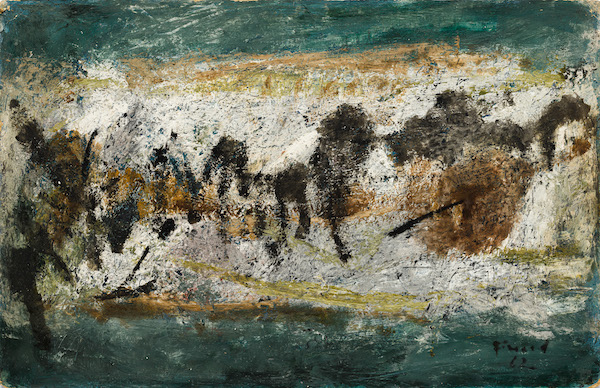
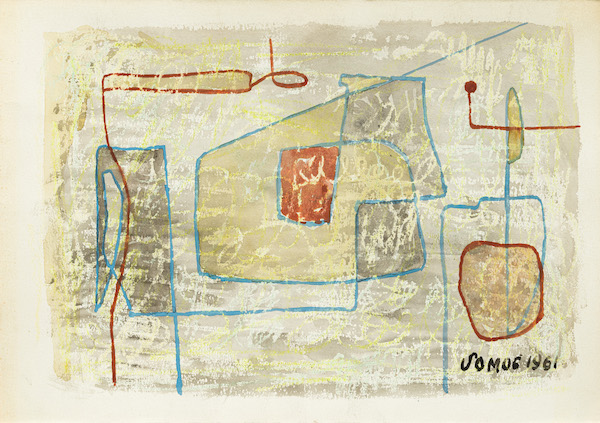

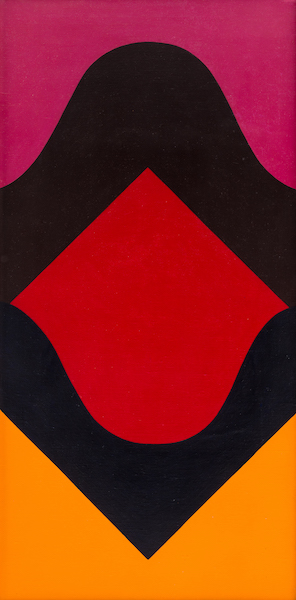
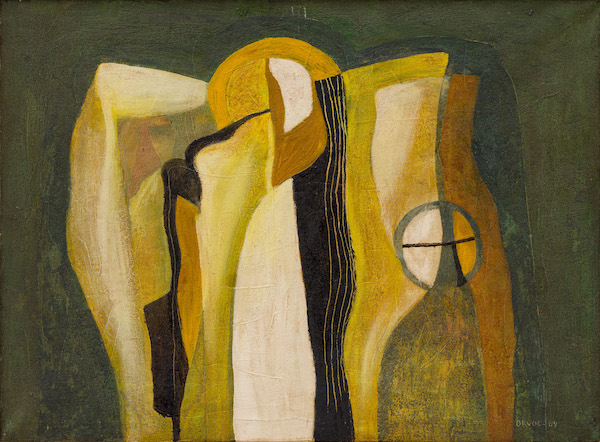
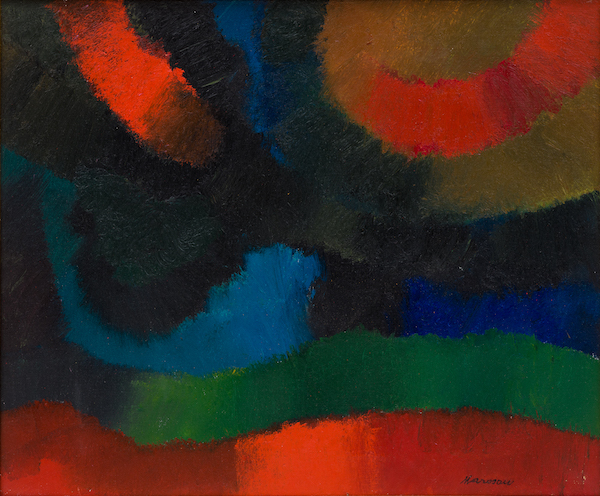
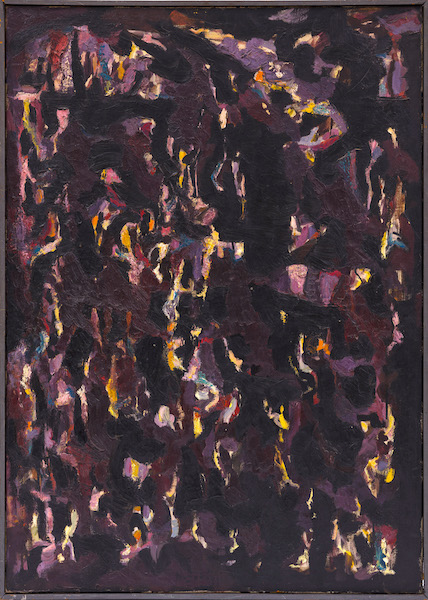.jpg?locale=en)
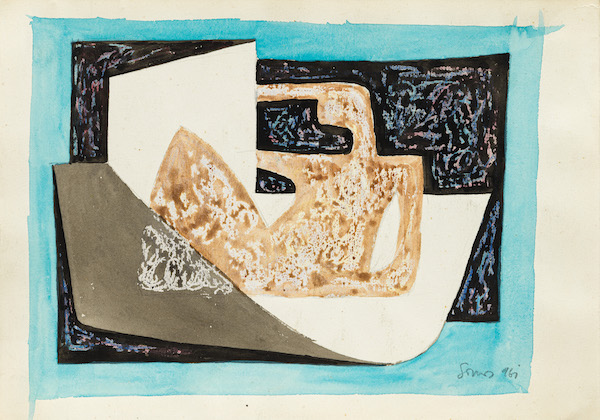
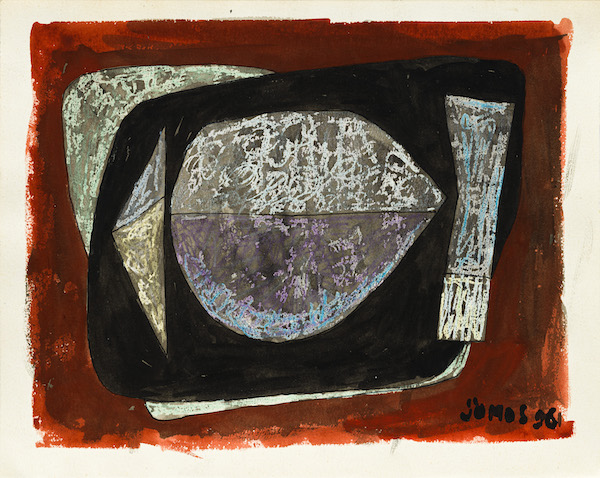
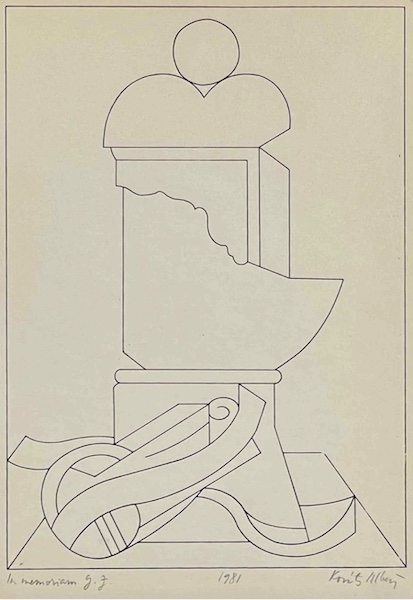
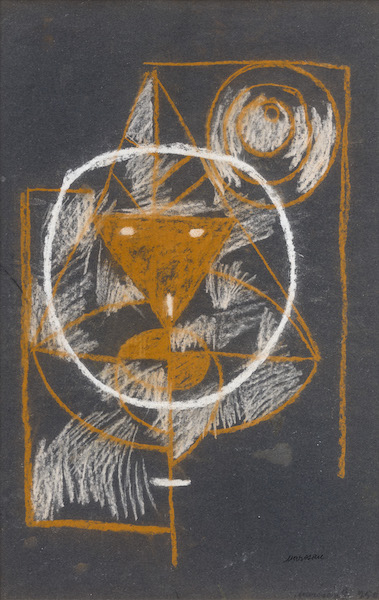
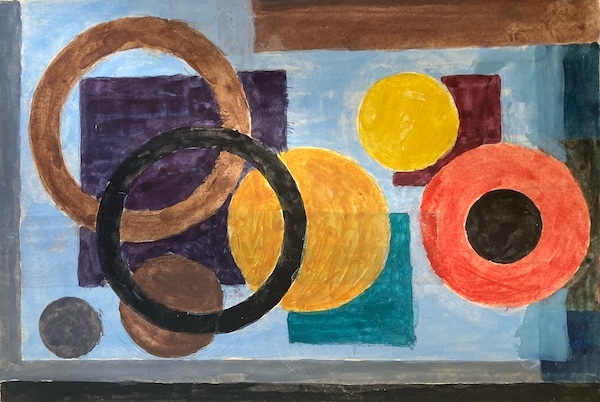
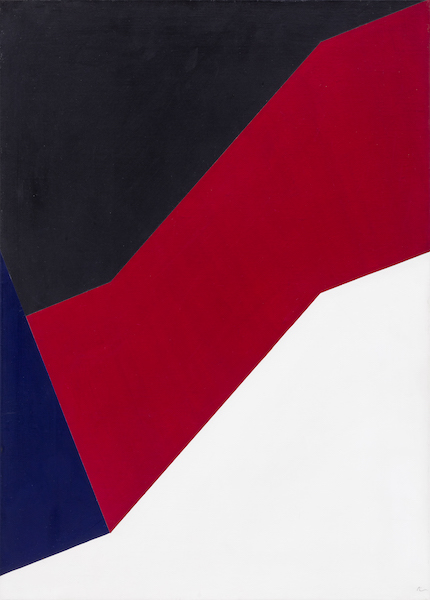
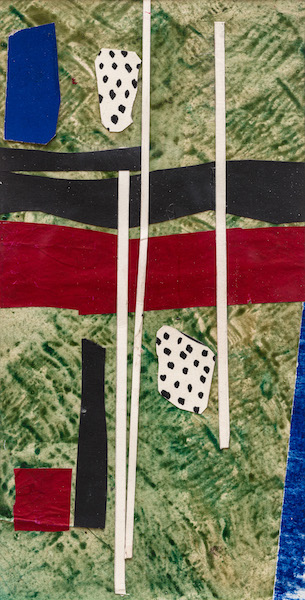
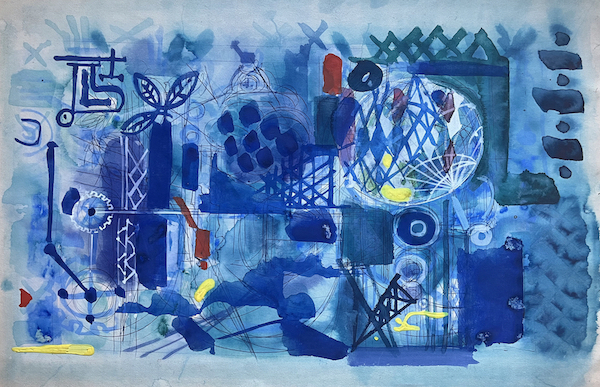
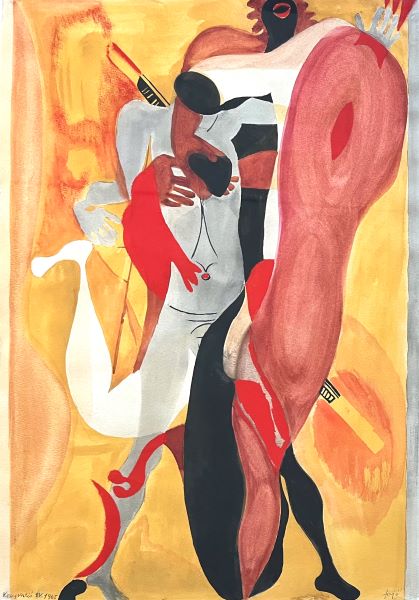
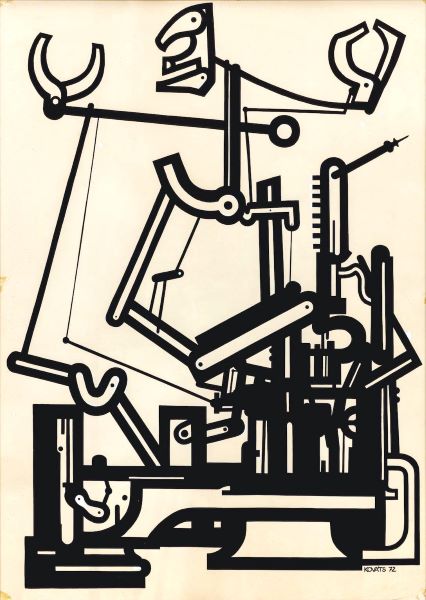
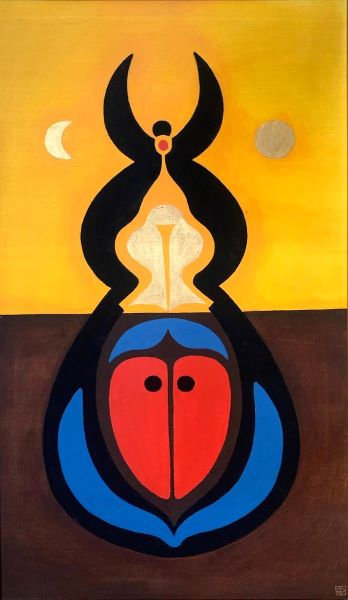
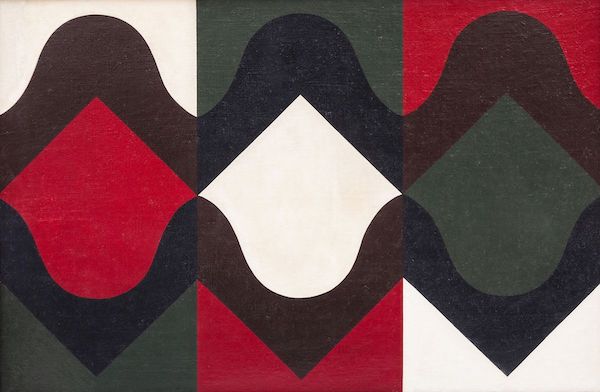.jpeg?locale=en)
